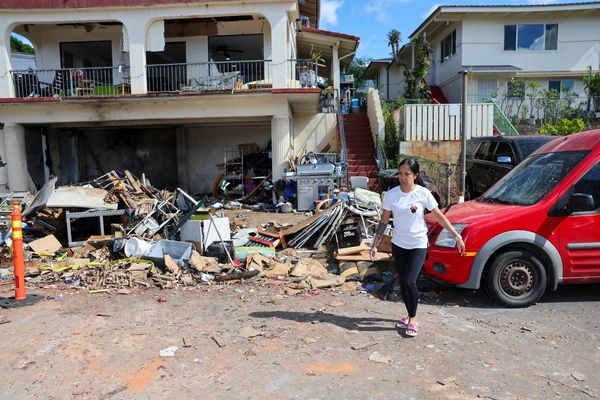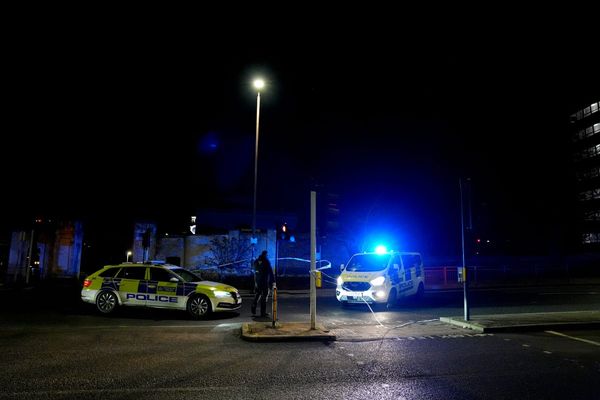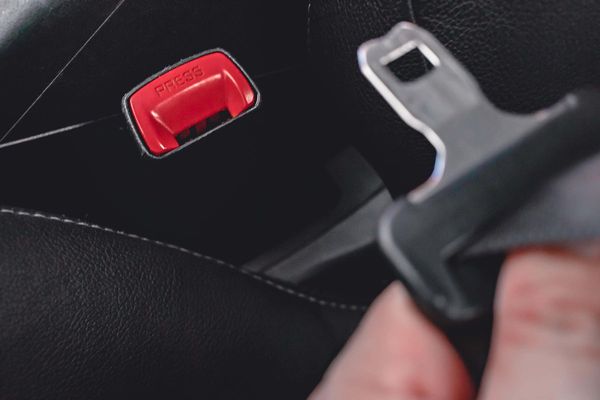
With over 800,000 bulbs planted in the ground, 16,000 Crape Myrtles and 18,000 Azaleas, Barber Motorsports Park is exploding with springtime color. It’s a setting so serene and so naturally beautiful, it has earned the reputation as the “August National of Motorsports.”
This weekend’s Honda Indy Grand Prix of Alabama is the NTT IndyCar Series’ annual trip to the Deep South. It has been an instant hit since the first time IndyCar competed here on August 11, 2010.
The annual Indianapolis 500 at the Indianapolis Motor Speedway on Memorial Day Weekend may be IndyCar’s version of “The Masters” but Barber Motorsports Park is certainly its Augusta National.
Sunday’s race at the 2.3-mile, 17-turn road course in Leeds, Alabama, just outside of Birmingham, has become one of the most popular, and most successful, races on the IndyCar schedule. Sunday’s Honda Indy Grand Prix of Alabama was announced as a sellout, one week ago.
With all of the land available to witness a race at the facility, how does a road course sell out?
When George Barber created this magnificent racing facility, he wanted his spectators to have a premium experience. It was more important to him to host 30,000 or 40,000 spectators per day in comfortable surroundings, than it was to jam them into the facility.
It’s quality, not quantity, that has always been important to the 82-year-old former owner of Barber Pure Milk Dai

In an exclusive interview with Barber on April 27, he told me how an Alabama dairy owner created the Augusta National of Motorsports.
“I don’t want to put you in a stand where you are elbow to elbow with somebody for a couple hours,” Barber explained. “That just doesn’t work. I want to sit you on a bank with a shade tree and your beer cooler and then get tired of looking at the race from that point and get on the tram and go to the next corner.
“I want you to be free to move around the park itself, which is easy to do with the tram and go from spot to spot. People love to do that and get different angles of the race track.
“A premium experience is more valuable than seeing how many people we can get in here at one time. I think that is what we have done, too. To be able to move around, go from place to place, then go into the paddock see all of that, see the driver’s up close. Just feel free to move around has made a hell of a difference.”
Only 35 Miles Apart, But Worlds Away
The irony of Barber Motorsports Park’s success is it’s located just 35 miles west of Nascar’s iconic Talladega Superspeedway, where stock cars race in insane packs at high speeds in races that usually end in mayhem.
By contrast, the IndyCar race at Barber Motorsports Park showcase the beauty of exotic racing cars competing on a challenging road course with tight turns, high-speed corners, and elevation changes.
“Nascar was last weekend,” Barber said. “Our’s is this weekend and it’s sold out. Sunday is sold out.
“We work together and are friends with Nascar. It’s not suited for this track, but we are friends with the folks at Talladega and at Nascar.”
Barber takes pride in his facility, which also features the largest motorcycle collection and largest Lotus race car collection in the world at the Barber Vintage Motorsports Museum.
Scenic Beauty and Best Behavior
Beautiful foliage and interesting artwork adorn this facility. That helps set it apart from other racing facilities.
“That’s just my nature,” Barber said. “I want to do it right and make it as beautiful as I can. People are surprised to see a beautiful park that happens to have a race track in it, not a race track that is fixed. You’ve seen many of them. They are garbage pits.
“Our restrooms are spotless. They are going to be spotless. They are clean.”
Barber expects clean behavior from his guests, as well. Alcohol is served at Barber and guests are allowed to bring in coolers, but they are also expected to behave.
This isn’t Indy’s infamous “Snake Pit” of the 1950s through the 1990s, when drunken debauchery was not only tolerated, but actually encouraged.
“If you misbehave, you are history,” Barber said. “You are out of the park. We don’t put up with any foolishness.
“When you take your kids, you have other families there and it’s a good wholesome atmosphere. I'll be damned if I'm going to have a bunch of drunks around a bunch of families and kids that are having fun and enjoying the day. If you misbehave a little bit, you are history.”
From Milkman to Museum Curator
So, how did a man who made his fortune in the family’s dairy create such a beautiful facility that has earned its position with one of the most anticipated IndyCar weekends of the season?
His father started the dairy business that processed and distributed milk throughout Alabama as the Barber Pure Milk Company.
“We did not own a cow,” Barber recalled. “My Dad died in 1970 and I started running the business at that time. We had great people and was very fortunate making a success of it. It was quite a thrill.
“It was a hell of a lot more dangerous than racing.
“I sold it to Dean Foods years ago (1997). Now, Dean Foods is no longer in existence. They went bankrupt. It’s been a tragic decade for the dairy business. I evidently got out at the right time and was very fortunate in doing so.”
Barber, who started racing when he was 10 or 11 years old and is proud of his 63 first-place trophies, had become a wealthy man without a business to manage after the sale.
He was also left with some vintage dairy trucks that he wanted to restore and feature in a museum in downtown Birmingham.
“We had a little museum downtown where we used to restore our milk trucks,” Barber explained. “I kept looking for a spot big enough where we could put a test track in. We finally found something on the outskirts of Birmingham. It was 880 acres or so and I bought that. We started thinking about a race track and a museum. We did that and one thing led to another, and I realized what little track I was trying to build to test our restorations on was not going to get it. We really needed to do it right the first time.
“So, we did.
“We built the race track and the next year we built the museum. That was in 2003.
“It came fairly quick to me that there was no way in hell that you could have the best Chevy collection and best Ford collection in the world because it’s already been done. The guy who was doing this for me was a motorcycle enthusiast and he said, ‘let’s try a motorcycle or two.’ I agreed and we got a little of this and a little of that.
“Pretty soon, I got fascinated with it because you could see the brakes, the suspension, the cylinder heads and the braking systems where a car, you only saw a beautiful set of hubcaps and a paint job. I really got fascinated by that in as much as I did all of my own work on my cars, and I loved the engineering and the tinkering. That’s how it all started.”
On Track
Barber wanted to have a test track for some of the vehicles in his collection. He enlisted some of the greatest names in international motorsports help with the design.
“We kept fooling with the race course,” he said. “I knew all I wanted to do at the time was test our restorations, but I thought in two- or three-year’s time we’re going to want to expand it so let’s do that now. I got a guy, Alan Wilson, to help design. I would send the corner to Carroll Shelby or John Surtees or Dan Gurney and ask them what they thought. They told me to open it up or do it this way or that way.
“A lot of people had a hand in developing this course. It was great fun doing it, getting a chance to talk to these guys and get their input.”
The museum has 800 to 900 motorcycles on display and own about 1,500. The 60 Lotus race cars make it the largest collection in the world for that marque.

“We’ve had to hang some of the Formula One cars out over the floor because we are running out of room,” Barber said. “It just grew. Some of the more interesting bikes are the ones that John Surtees used to win the World Championship. He is the only man alive to win the World Championship on two wheels and four wheels. We have the Ferrari he won the championship with on four wheels and his bikes that he won the World Championships with on two. Those are some of the fun things we’ve got.
“It seems to be working now. We’ve got one bridge that crosses the race track over a waterfall and then have a second bridge that overlooks the entire race course.
“It’s more than a motorcycle museum; it’s an entire experience.”

Barber cannot place a value on his motorcycle collection but admits its some of the best investments he has made in his life.
“Some of these things have tripled and quadrupled in value since I started. As far as a total value, I have no idea,” Barber said. “It’s been a lot.”
For six years, Barber Motorsports Park featured a fabulous road course, but it was mostly used for motorcycle races and a few sports car meets here and there including the Porsche School. Barber had bigger ideas, however, and he contacted IndyCar.
In 2009, IndyCar under the supervision of its then President of Competition Brian Barnhart, conducted a feasibility test at Barber Motorsports Park. It was so successful, the track was given a race for April 11, 2010.
Helio Castroneves won that inaugural IndyCar race and the competition on the track was far better than expected. It actually featured more racing than some of the other road and street courses on the schedule at that time.

What made it so successful?
“Just Indy,” Barber said succinctly. “Indy is so fabulous. To get them to the track in Birmingham, Alabama was fabulous to me. Something grew and we have them. If you talk to the drivers, they will say this is probably one of their best tracks.
“It puts on some of the best races of the year.
“When we had guys like Gurney and Shelby and Surtees looking at it and poking at it and adjusting it, I thought this was going to work. Then, we were going to make it the safest track around with adequate runoff and barriers. Then make it one of the most beautiful tracks.
“People are not going to come to Birmingham, Alabama to watch anything that is half-assed.”
By providing a premium facility, IndyCar delivered with an iconic event.
From Monkeys and Mountain Lions to Zombies and Martians — George’s Critters
But there is something else that sets Barber Motorsports Park apart from other racing facilities.
It’s “George’s Critters.”
Barber has created artwork of wild animals, giant spiders, Martians, and Zombies that are all over the course. Those include “Henry the monkey” who hangs from the billboard atop the scoring pylon. A giant spider named “Charlotte” is in a series of turns known as “Charlotte’s Web.”

A mountain lion has been moved from the scoreboard to the top of the restrooms in the paddock.
“He got sunburned over there, so we moved him to the restrooms,” Barber said.
What was the genesis of “George’s Critters?”
“When we first started this, we were attacked viciously by the Cahaba River Society and those crazy environmentalists,” Barber explained. “I mean vicious. They would call us in the middle of the night and raise hell. It was unbelievable what they were doing to my people and me.

“So, I got the critters and the spiders and the various things around and I called in the press. I said, ‘Look at this, my God, the spiders and the critters and the animals, they drank this water around here and looked what happened to them. This is terrible.’
“Boy, they played it up big time and they really did us justice. The environmentalists saw this, and they backed off. We got our mojo back; we got our spirit back and we completed the project.
“Now, I take great delight in inviting the environmentalists out and ask them to show me the environmental disaster. They poo-poo turn away and walk away.”

Barber Motorsports Park was a dream when George Barber was 60. Today at 82, he enjoys the shrine that he has created and has created a strong bond with IndyCar.
“I think they are going to do well,” Barber said of IndyCar. “They have some great personalities and great guys, no Prima Donnas in this group. They are all very professional and I am delighted to have them on board.”







